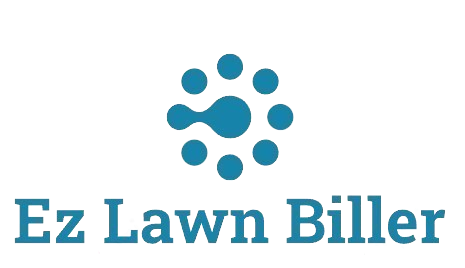Avoid These Common Reduce Admin Time Mistakes
In a fast-paced world, reducing administrative time is crucial for businesses to thrive. This blog post delves deep into common mistakes that hinder efficiency and offers actionable solutions.
Avoid These Common Reduce Admin Time Mistakes
In today’s competitive landscape, efficiency is paramount for success. This holds especially true for businesses that rely heavily on administrative processes. Reducing admin time not only enhances productivity but also allows teams to focus on their core competencies. However, many organizations inadvertently fall into common traps that impede their progress. In this comprehensive guide, we will explore these pitfalls and provide practical tips on how to avoid them. From leveraging technology effectively to implementing best practices in workflow management, this article aims to equip you with the knowledge to streamline your operations successfully.
Understanding the Importance of Reducing Admin Time
The significance of reducing administrative time cannot be overstated. According to studies, employees spend nearly 30% of their workweek on administrative tasks. This statistic highlights a substantial opportunity for businesses to enhance their operational efficiency. By minimizing the time spent on mundane tasks, companies can redirect their focus toward more strategic initiatives that drive growth and innovation.
Moreover, reducing admin time can lead to improved employee morale. When team members aren’t bogged down by repetitive tasks, they tend to be more satisfied with their work, leading to higher retention rates. In essence, an efficient workflow fosters a more engaged and productive workforce.
1. Neglecting to Leverage Technology
One of the most common mistakes businesses make is failing to harness the power of technology. In today’s digital age, numerous tools and software solutions exist to automate and streamline administrative processes. Whether it’s using a dedicated lawn service app or an all-in-one lawn billing software, leveraging technology can significantly reduce the time spent on paperwork and manual tasks.
For instance, many lawn care professionals still rely on outdated methods for invoicing and service tracking. This not only consumes valuable time but also increases the risk of errors. By adopting a modern lawn company computer program, businesses can automate invoicing, ensure accurate billing, and manage client details seamlessly.
Additionally, investing in a cloud-based lawn service computer program allows for real-time updates and access from any location. This level of flexibility is particularly advantageous for lawn care businesses operating in the field, enabling them to manage schedules and client interactions efficiently.
2. Overcomplicating Processes
Simplicity is key in any administrative workflow. A common pitfall organizations encounter is overcomplicating their processes. This often leads to confusion, delays, and ultimately, wasted time. Streamlining processes should be a primary goal when aiming to reduce admin time.
To combat complexity, businesses should regularly assess their existing workflows. Identifying redundant steps or unnecessary approvals can help in simplifying operations. For instance, if a lawn care company requires multiple approvals for service scheduling, it may delay the process unnecessarily. Streamlining approvals or delegating authority can enhance efficiency.
Moreover, creating standardized templates for invoices and service records can alleviate the burden of reinventing the wheel with every client interaction. Utilizing a lawn company app that offers customizable templates for invoicing can save time and ensure consistency across the board.
3. Failing to Train Staff Effectively
Investing in technology is only one part of the equation; effective training is equally crucial. A common mistake is failing to provide adequate training on new systems and processes. Employees must feel confident and competent in using the tools at their disposal to maximize efficiency.
Businesses should implement comprehensive training programs when introducing new software or processes. Regular workshops and refresher courses can help keep staff updated on best practices and new features. Furthermore, encouraging a culture of continuous learning fosters a more adaptable workforce that is better equipped to handle administrative tasks efficiently.
When employees are well-trained, they can utilize the full potential of tools like lawn service software, which can automate many of their daily tasks. This not only saves time but also enhances the overall quality of service provided to clients.
4. Not Implementing a Clear Communication Strategy
Clear communication is critical in any organization. One of the significant mistakes companies make is not establishing a formal communication strategy. Poor communication can lead to misunderstandings, delays, and duplicated work, all of which contribute to increased admin time.
Organizations should develop a structured communication strategy that outlines how information flows between team members. Regular check-ins, progress updates, and a centralized communication platform can help teams stay aligned and focused. For example, a lawn care business might benefit from using a dedicated communication tool to coordinate schedules and share client updates in real-time.
Moreover, utilizing collaborative platforms can enhance transparency and accountability within teams. When everyone is informed about their responsibilities and timelines, the administrative process becomes much smoother.
5. Overlooking Customer Relationship Management
Customer relationship management (CRM) is a crucial aspect of reducing admin time that many businesses often overlook. Maintaining strong relationships with clients is essential, but managing these relationships manually can be time-intensive and prone to errors. Using a robust lawn service app that includes CRM features can streamline this process significantly.
With an integrated CRM system, businesses can track interactions, service history, and client preferences in one place. This centralized information allows for faster response times and more personalized service, enhancing customer satisfaction while reducing administrative burdens.
By automating follow-ups and reminders, businesses can ensure that clients receive timely communications without adding to employees’ workloads. The result is a more organized and efficient approach to client management that frees up time for other essential tasks.
6. Ignoring Data Management and Analytics
Data management is often an overlooked aspect of reducing admin time. Many businesses gather data but fail to analyze it effectively. Without utilizing data analytics, organizations miss out on valuable insights that could inform decision-making and optimize operations.
For instance, lawn care businesses can use data to track service trends, identify peak seasons, and analyze customer preferences. By understanding these patterns, companies can allocate resources more effectively and improve service delivery. Implementing a service company software that includes analytic capabilities can help in this regard.
Furthermore, utilizing data can enhance marketing efforts, allowing businesses to target specific demographics with tailored campaigns. This strategic use of data not only improves efficiency but also drives growth and client engagement.
7. Not Regularly Reviewing and Optimizing Workflows
A critical mistake businesses make is failing to review their workflows regularly. Administrative processes are not static; they evolve with changing business needs and market dynamics. Regular reviews of workflows can help identify bottlenecks and areas for improvement.
Organizations should establish a routine for evaluating their administrative processes. Gathering feedback from employees who interact with these workflows daily can provide valuable insights. By involving staff in the review process, businesses can foster a culture of continuous improvement and innovation.
Moreover, setting key performance indicators (KPIs) to measure the efficiency of administrative processes can help track progress over time. This data-driven approach ensures that organizations remain agile and responsive to the needs of their clients and market conditions.
8. Emphasizing Quantity Over Quality
While it’s important to maximize efficiency, businesses must not sacrifice the quality of their work in pursuit of speed. A common mistake is focusing solely on the quantity of tasks completed rather than the quality of service provided. This often leads to mistakes, rework, and ultimately, increased admin time.
To strike the right balance, organizations should prioritize quality assurance in their workflows. Implementing quality checks and encouraging team members to take ownership of their work can enhance service delivery and reduce the need for corrections.
For example, a lawn care company could establish a standard operating procedure for service delivery, ensuring that every job meets specific quality criteria. This proactive approach minimizes the likelihood of errors and the administrative time required to address them.
Conclusion
Reducing administrative time is a critical objective for any business aiming to enhance efficiency and productivity. By avoiding common pitfalls such as neglecting technology, overcomplicating processes, and failing to provide effective training, organizations can streamline their operations significantly.
Moreover, focusing on clear communication, effective customer relationship management, and data analytics can further bolster efficiency. Regularly reviewing workflows and maintaining a commitment to quality are essential to sustaining improvements over the long term.
In conclusion, taking proactive steps to address these common mistakes will empower businesses to optimize their administrative processes. Embracing solutions like EZ Lawn Biller can provide the tools needed to navigate these challenges while ensuring a smoother, more efficient operation. Don’t wait to enhance your business’s efficiency; take action today!




